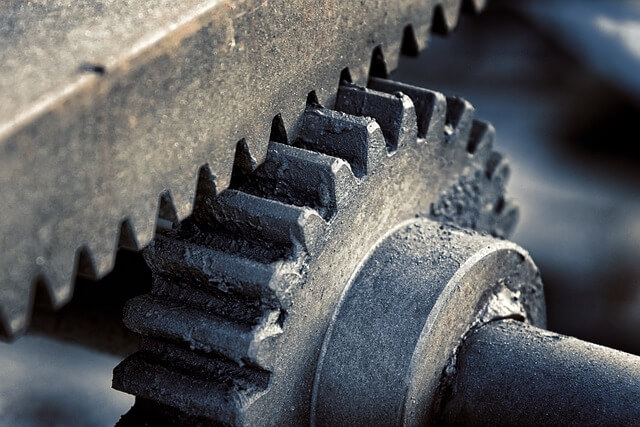Which Saves More Gasoline: Automatic or Manual Vehicles?

In the history of automotive, there has always been a debate around the question: which type of transmission saves more gasoline, automatic or manual? For a long time, vehicles with manual transmission, also known as standard, have been ahead in terms of fuel efficiency. But automotive technology has advanced by leaps and bounds, especially in the last decade, leading to significant improvements in fuel efficiency of automatic vehicles. Today, the gap between the two types of transmission is less pronounced, and in many cases, automatic vehicles can match or even outperform their manual counterparts in terms of fuel savings.
In this article, we will demystify the differences between automatic and manual transmissions and analyze which one might be more fuel-efficient in the world of modern automotive. So, if you’re wondering, «Which saves more gasoline: automatic or manual?» keep reading.
Automatic and Manual Transmissions: A brief explanation
Manual Transmissions (Standard)
Manual transmissions, also known as standard transmissions, require the driver to manually shift gears using a clutch and gear lever. This system allows the driver to have direct control over engine revolutions and the timing of gear changes. Experienced drivers can often optimize fuel efficiency by controlling when and how gear shifts are performed.
Automatic transmissions
Automatic transmissions eliminate the need for the driver to manually shift gears. Instead, they use a computer-controlled hydraulic system to change gears based on driving conditions such as vehicle speed and engine load. Automatic vehicles are generally easier to handle, especially for novice drivers or those driving in heavy traffic areas.
In recent decades, automatic transmissions have seen significant technological advancements. Modern automatics feature a higher number of gears and more sophisticated transmission management systems, allowing for more efficient gear changes and often at the optimal moment for fuel economy. Some automatics even offer an «eco mode» option that further optimizes gear shifting for fuel efficiency.
It’s important to note that there are also semi-automatic transmissions (also known as automated manual transmissions) that allow drivers to manually shift gears without a clutch, but these systems are less common and will not be the main focus of our discussion.
Comparing Fuel Efficiency
Manual transmissions used to be known for being more fuel-efficient than automatic transmissions. This was partly because the driver had more control over the engine revolutions and could shift gears at the optimal moment to minimize fuel consumption. Additionally, manual transmissions used to be lighter and less complex, which also helped improve fuel efficiency.
However, in recent years, the gap between manual and automatic transmissions in terms of fuel efficiency has significantly narrowed and even reversed in some cases. Advancements in automatic transmission technology have allowed for the incorporation of more gears and improved shifting efficiency. Nowadays, automatic transmissions can shift gears at the most efficient moment, sometimes even better than a human driver.
Furthermore, many modern automatic vehicles also offer the option to manually shift gears without a clutch (through «manual» or «sport» mode), allowing drivers to have greater control over engine revolutions when desired.
Lastly, hybrid and electric vehicles, which are often the most fuel-efficient, typically use automatic transmissions.
That being said, there is a wide variation in fuel efficiency among different vehicles, and the type of transmission is just one of the many factors that can influence it. Other important factors include the type of engine, vehicle weight, aerodynamics, and driver behavior.
Therefore, while automatic transmissions may be more fuel-efficient overall in newer vehicle models, this doesn’t necessarily mean it will always be the best choice for every driver or every vehicle. It is important to research and compare the specific fuel efficiency of the vehicles you are considering purchasing.
Factors That Affect Your Vehicle’s Fuel Efficiency

The fuel efficiency of a vehicle is determined by a variety of factors, not just the type of transmission. Here, we will explain some of the most important factors:
The vehicle’s engine
Smaller-displacement engines tend to be more fuel-efficient than larger-displacement ones. Additionally, turbocharged engines can offer better fuel efficiency by providing more power from smaller engines. Diesel engines, despite having higher fuel consumption in volume, often offer better energy efficiency than gasoline engines. And, of course, hybrid and electric engines can offer the best fuel efficiency of all.
The weight of the vehicle
A heavier vehicle requires more energy to move, which can reduce fuel efficiency. This includes the weight of the vehicle itself as well as any cargo being carried.
The aerodynamics of the vehicle.
A vehicle with better aerodynamics experiences less air resistance, which can improve fuel efficiency.
The tires of the vehicle.
Low rolling resistance tires can improve fuel efficiency. Additionally, keeping the tires properly inflated can also help maximize fuel efficiency.
Driving style
The way you drive can have a significant impact on how your vehicle saves fuel. Aggressive driving, including rapid acceleration and harsh braking, can reduce fuel efficiency. On the contrary, driving at a constant speed and avoiding excessive idling can improve fuel efficiency.
Vehicle maintenance
Keeping your vehicle in good condition can help maintain fuel efficiency. This includes things like regularly changing the engine oil, keeping air filters clean, and ensuring the exhaust system and emission control system are in proper working order.